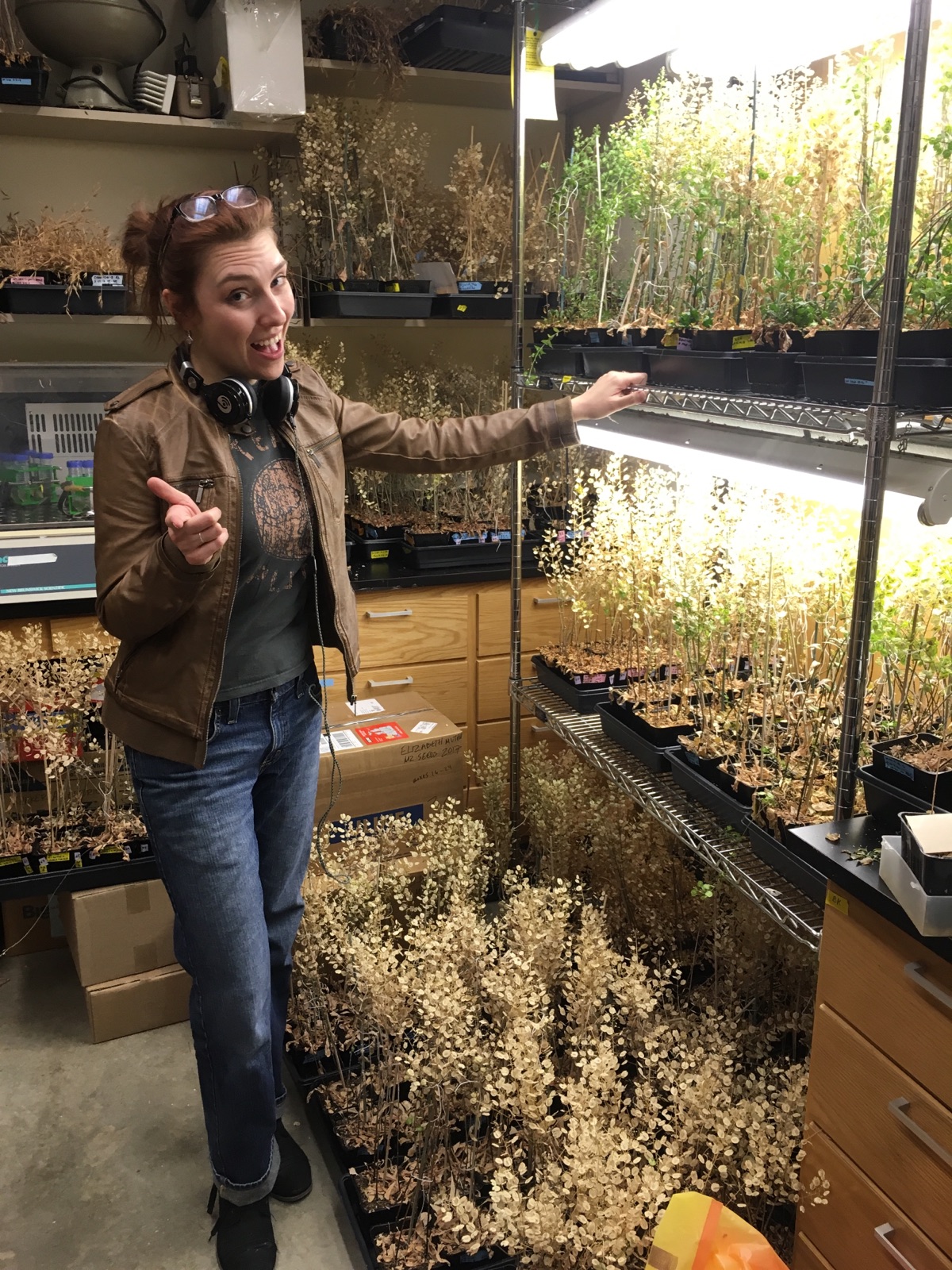This guest post was written by my friend, Michaela McGinn. Not only is she one of the reasons I started down the path to zero waste, but her work in biofuels is an inspiring insight into the potential and hurdles of renewable power sources. She graciously agreed to inform my readers about her work and what we can do to make our society cleaner and more sustainable.
My name is Michaela McGinn and I am a genetic engineer developing a new plant called pennycress as a biofuel source.
While wind and solar power are viable fuel alternatives, they are not yet compatible with most existing technologies, and machines require a custom build or complete mechanical overhaul in order to use these non-traditional energy sources. Biofuels seek to provide renewable energy that is also compatible with the majority of existing technologies, providing easy transitions, saving the end user money and time, and preventing existing machines from turning into outdated scrap metal.
A biofuel is a fuel that is produced through agriculture and/or by microbes rather than produced from extracting fossil fuels, such as coal and petroleum. By using carbon from above-ground organisms, they do not introduce new harmful carbon into the ecosystem. Ergo, biofuels are renewable and effective. Unfortunately, forces are at work to stop biofuels from making a real impact on our climate and in our society.
Pennycress is a really cool little plant.
One of the big hurdles biofuels face is The Food vs Fuel Debate, meaning that people are concerned about using farmland for growing oil rather than food products–and rightfully so. Pennycress avoids this problem by:
- Growing naturally throughout the entire continental US
- Fitting in between the corn and soybean rotation commonly practiced throughout the Midwest (where the majority of our food comes from)
- Growing in the winter when fields are traditionally vacant
- Providing some ecosystem services (serving as a winter shelter for little critters, using its root system to prevent soil erosion and nitrogen run-off), which are big issues with commercial farming
If you watch the news, you will have heard of the ‘dead zone’ in the Gulf of Mexico where fish and plant life are dying en masse. This is due in part to fertilizer run-off from vacant farmland that pollutes waterways and promotes algal blooms, which starve aquatic life of light and oxygen. By preventing the run-off, pennycress can help us avoid this devastation in the future.
Ease of adoption is paramount to the success of biofuels.
Finding something that works with our existing heavy machines and transport chain will get us closer to reducing our carbon footprint, which is why I feel strongly about getting a quick and dirty option for cleaner fuel to the market as soon as possible.
No specialized machines
In the pennycress model, we aim to use common farming and pressing equipment to harvest pennycress seeds and press the oil from them, using the same processing and technology as soy and canola oil extrusion. This liquid oil is energy dense and after processing, can be used in existing heavy engines, just the same as petroleum based diesel fuel.
Biofuels are in a tough spot due to the current political climate.
Ideally, the government would pull out all the stops tomorrow and we could do massive conversions that allow our current technologies to support geothermal, solar, wind, and wave power. I will personally eat my own pants if that ever happens.
Instead, the government has:
- Reduced our funding
- Placed agencies such as the USDA and EPA under intense scrutiny
- Given the occasional gag-order as individuals in positions of power
- Generally refused to acknowledge the reality and severity of our changing climate
Sadly, the current administration is not the only one to blame. The general public is being kept from accessing information by the scientific community’s failure as a whole to disseminate information to the public.
The majority of scientific publications are written in such a way that the lay-person cannot understand them. That inaccessibility utterly defeats the purpose of tax-funded research. We in the scientific community need to change in the coming years as scientists and civilians work together to overcome the additional barriers that have been placed between us.
People will choose the option of least harm if it is easily available to them.
That is one of this biggest struggles alternative energies face today: What are individuals actually willing to do to reduce their footprint? Asking for too much is detrimental to the cause, as there is a growing sense of futility regarding the climate and our world in general–that the problem is so big nothing an individual does matters…
But it does.
Everything you do matters.
If individuals make small choices every day to reduce consumption and choose cleaner, more responsibly sourced goods, it will be noticed. You vote with every dollar you spend, and if a product is demanded, it will be supplied.
Scientists: reach out. Go to a town hall and host an AMA for genetic engineering, climate, or woodland best practices.
People: get interested and be critical. Rather than spreading misinformation based on sensationalist journalism, look for real, peer-reviewed data (a.k.a. data that has been tested and approved by other scientists). Do not take anyone’s word for anything. If someone does not want you to see for yourself, then they are probably hiding something.
Meanwhile, I will continue to work on a better fuel option that fits easily into our current infrastructure.
